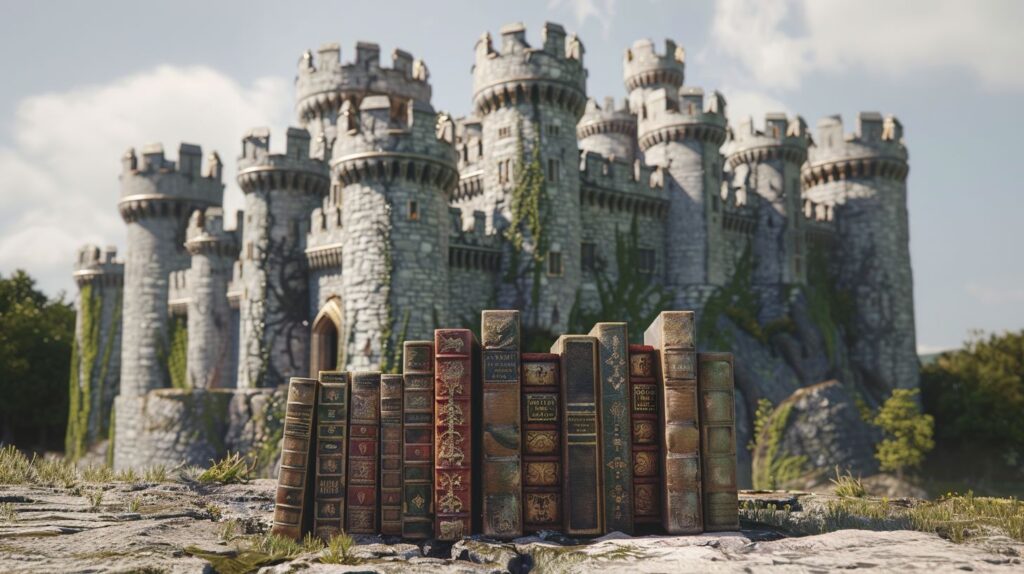
The part of my newsletter that many readers enjoy most is the Behind the Books section. So I’ve pulled out those items into separate blog posts. This one focuses on the Red Celts’ capital city of Pant y Wern as featured in Seeing Red in Gretna Green and many other books in the series.
What does Pant y Wern even mean?
Yep. Great plan … Let’s begin with the origin of the name Pant y Wern.
"The name of the Red Celt’s capital had struck my six-year-old self as the funniest thing in the world. How could a town be called after my underwear? Oh, how I’d giggled. Mabon patiently explaining it wasn’t Pantywern but Pant y Wern. Three words that, in Welsh, meant a swamp and a valley had done nothing to suppress my amusement. OK, in the spirit of full disclosure, it still amused me, just perhaps on a different plane from my six-year-old understanding of what panties covered. Swampy valley indeed!"
Seeing Red in Gretna Green. Page 9. You can visit the book’s own page here.
In case any of you aren’t familiar with the walled cities of the UK, let’s talk about the many types of castles and walled cities on our tiny island. Or at least the ones I’ve used as the basis for much of the Red Celt’s capital.
The castle to the right is one of the pretty, smaller types. Called Bodiam Castle it’s in East Sussex (not far from London). It’s a style one might see in a children’s picture book, complete with a moat.
Yeah, Mabon’s is nothing like that 😀

Mabon’s sprawling, messy, coo-riddled, walled town and castle home was based, in my imagination at least, on the castles and towns of Conwy and Beaumaris in North Wales.
Pant y Wern with its two Gates and the road to the river, down which the coos are often driven by Glynis, was strongly inspired by my time in Conwy and Beaumaris.
King Edward the First built most of the Welsh castles when he went on his castle-building spree. (Which included 17 in Wales alone). You can see many of them on a beautiful Welsh government website here.
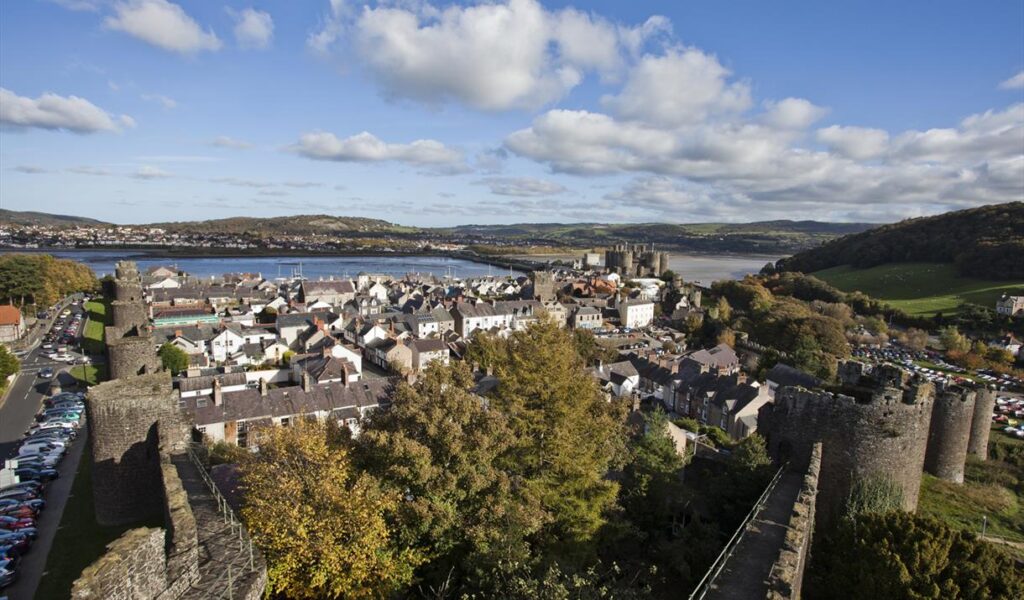
Along with the Welsh castles, I also pictured the English walled cities of York and Carlisle. I know them all well. My family live near York. I went to college in Wales and live close to Carlisle.
As you’ll see if you visit the website, the castle in the top right corner of the town is just one part of the greater walled town of Conwy. There’s a surprising amount of real estate within the walls.
If you’re into history and like the background to things, then the Conwy wiki page is a source of great info.
My inspiration
Conwy with its extensive walls, formed the basis for Pant y Wern in my mind when I wrote the books. Provided you imagine it all in the Medieval period, of course!
With houses about this size.
For perspective, I’m five feet nothing. The idea I might ever hit my head on a door lintel explains my surprised expression. The black and white houses just inside the walls of Pant Y Wern, as described in Seeing Red, probably look much like this one in Beaumaris. It was built around 1400.
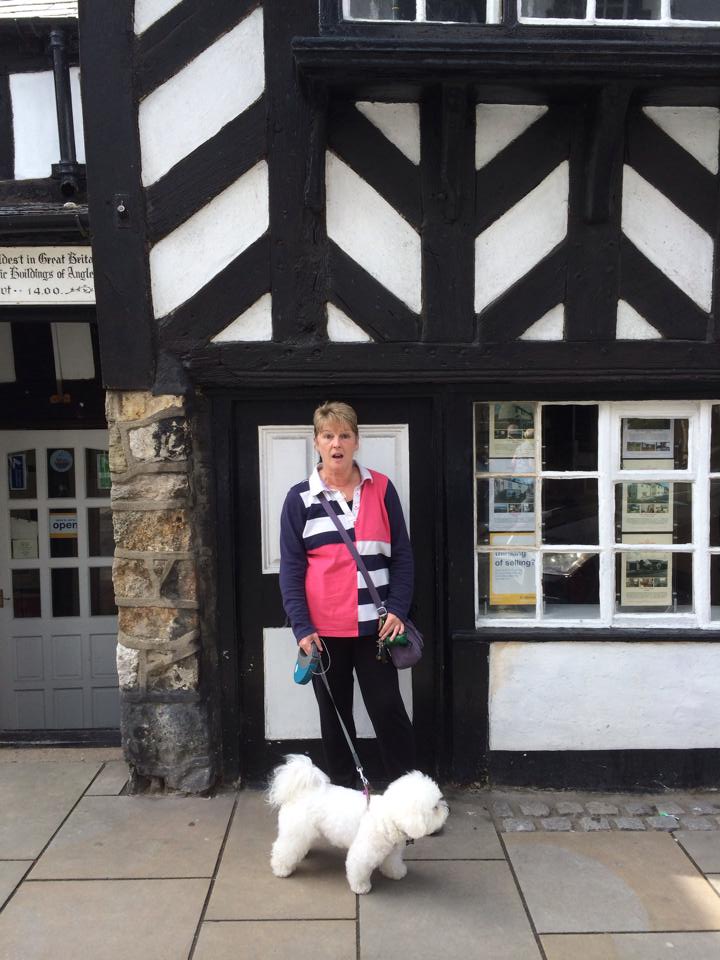
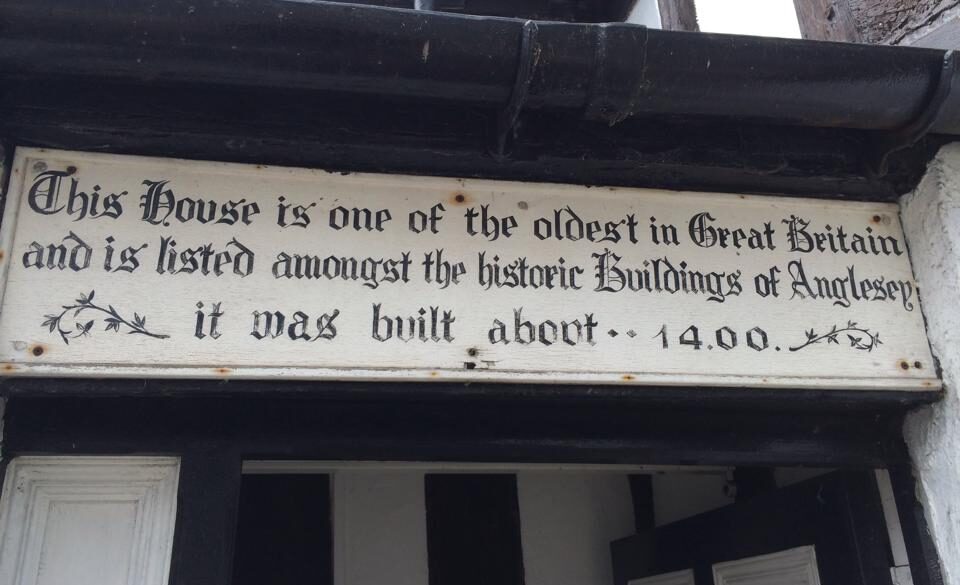
Mabon’s sprawling, messy, coo-riddled, walled town and castle home was based, in my imagination at least, on the castles and towns of Conwy and Beaumaris in North Wales.
Castles, Walls and History
If this tiny taste of towns with walls has sparked your imagination, you should know they’re incredibly common in the UK. Even towns and villages that have long since lost their walls often retain their gateways (see Craster below)
They can cause chaotic traffic issues as everyone tries to squeeze through old gates about this size to get into the centre. The main thing that varies is how well preserved they are.
Check out the Wikipedia article about the UK’s walled towns here
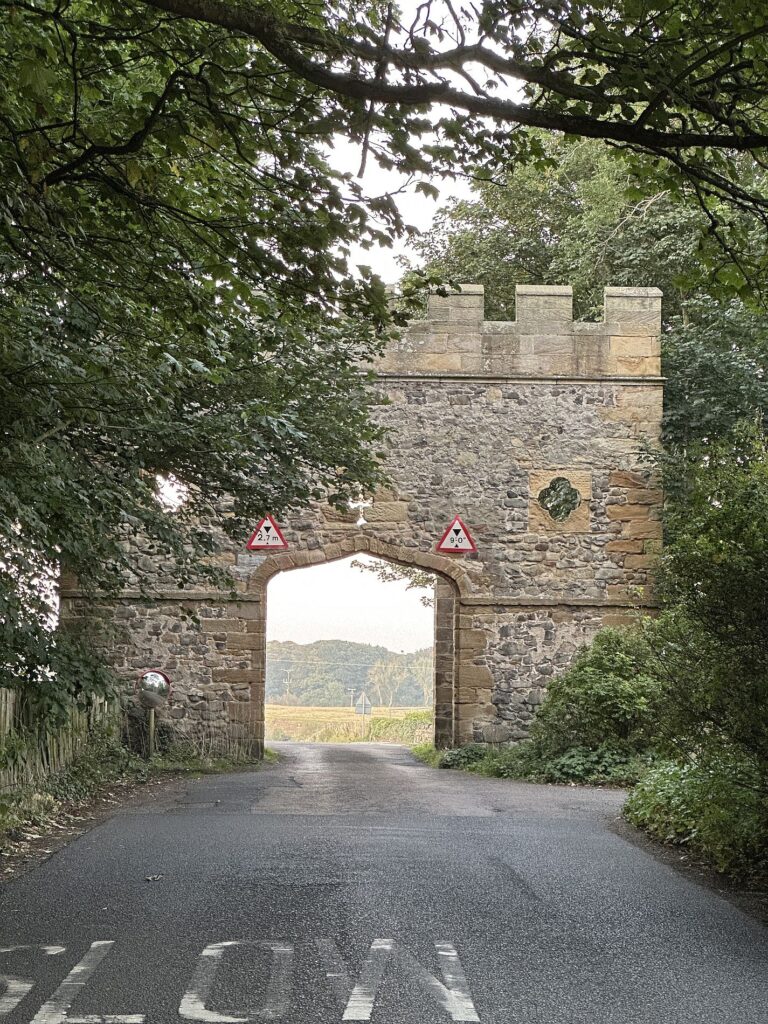
Bamburgh Castle
The inside of Mabon’s castle home was probably inspired by Bamburgh castle in Northumberland. Because unlike the Welsh castles, it’s been renovated internally, and it’s easier to get a sense of what it might all be like if Mabon was allowed to run riot there 😀
You can see more photos on the castle’s own website

Lucy and I admiring Bamburgh Castle in the summer of 2024.
She’s not yet recovered from her shorter than short, pre-surgical groom, but she’s lovely and cool and back to full fitness.
Bamburgh is one of the ‘medium-sized’ castles and would have held weekly markets inside the castle walls and larger festivals on the Castle Green outside the castle.
To give you some human perspective, below is a photo of one of the smaller internal areas by the Keep. Last summer, it was the location for a cinema project. By viewing it with people in it, we can get a better idea of the real size of one of the castle’s smaller spaces.
The castle is owned by the Armstrong family and, if any of my British readers are wondering? Yes, Northumbrian actor and musician, Alexander Armstrong of the BBC show Pointless, is distantly related to the family.
If any of you are wishing I’d included a map, a plan of the castle, or anything else, you can visit the Bamburgh Castle research project here.
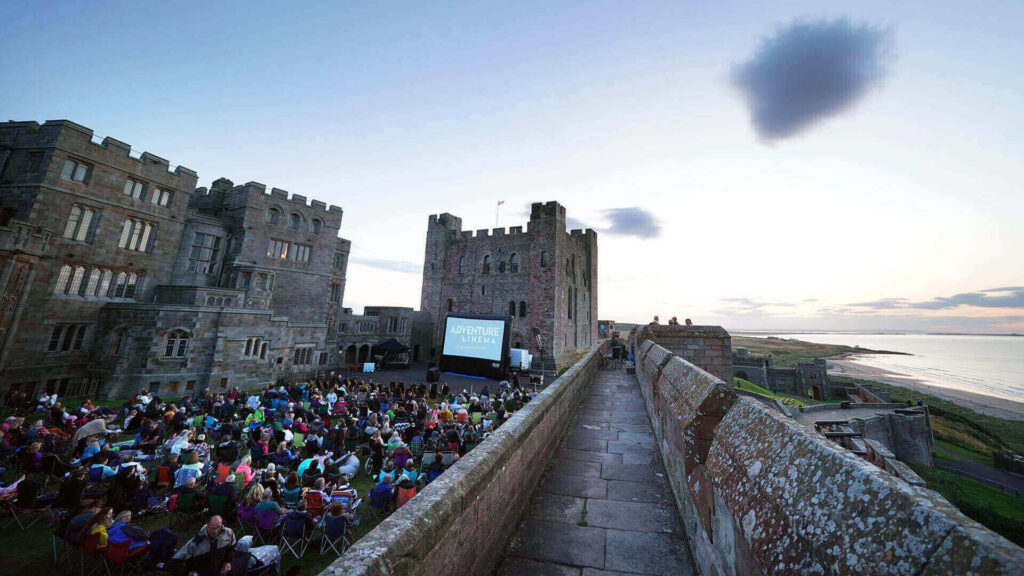
And finally
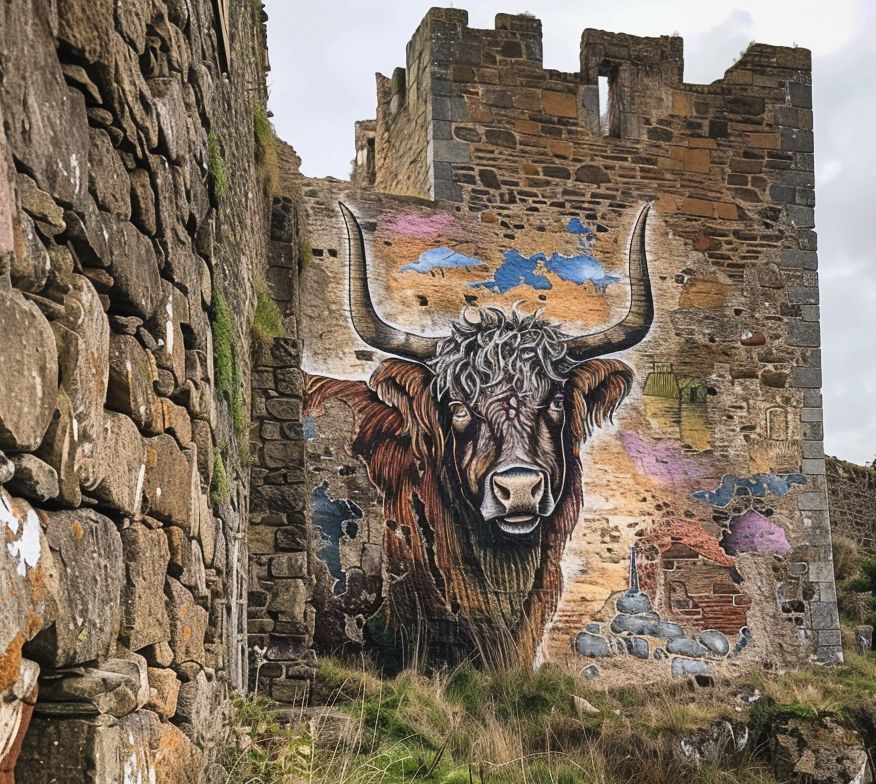
If anyone is wondering how present Mabon might be in book six Market Forces in Gretna Green — Very. He’s an important part of the coo story and the problems with his walls 😂.
This is only a single part of the Behind the Books series.
You can find the main index page here
And the article about the Smiths jewellery here